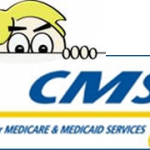![]() Your HCPCS level II code books are incomplete.
Your HCPCS level II code books are incomplete.
The Centers for Medicare and Medicaid Services released 49 corrections to the 2016 HCPCS Level II code set December 2, too late to be included in any of the hard copy code-books. You will also be hard pressed to find many of these corrections in the Medicare guidelines even though the codes became effective on January 1, 2016.
DRUG TESTING Codes: 2016 Replacement Codes for G0431 and G0434
Effective for the dates of services from January 01, 2016 CMS implemented the following changes for drug testing;
1. Deleted the HCPCS codes G0431, G0434 and G6030 through G6058
2. Continue to not recognize the AMA CPT codes 80300 – 80377
3. For presumptive testing, created three G codes:
G0477 – Drug test(s), presumptive, any number of drug classes; any number of devices or procedures, (e.g., immunoassay) capable of being read by direct optical observation only (e.g., dipsticks, cups, cards, cartridges), includes sample validation when performed, per date of service
G0478 – Drug test(s), presumptive, any number of drug classes; any number of devices or procedures, (e.g., immunoassay) read by instrument-assisted direct optical observation (e.g., dipsticks, cups, cards, cartridges), includes sample validation when performed, per date of service
G0479 – Drug test(s), presumptive, any number of drug classes; any number of devices or procedures by instrumented chemistry analyzers utilizing immunoassay, enzyme assay, TOF, MALDI, LDTD, DESI, DART, GHPC, GC mass spectrometry), includes sample validation when performed, per date of service
4. For definitive drug testing, created four tiered G codes:
G0480 – Drug test(s), definitive, utilizing drug identification methods able to identify individual drugs and distinguish between structural isomers (but not necessarily stereoisomers), including, but not limited to GC/MS (any type, single or tandem) and LC/MS (any type, single or tandem and excluding immunoassays (e.g., IA, EIA, ELISA, EMIT, FPIA) and enzymatic methods (e.g., alcohol dehydrogenase)); qualitative or quantitative, all sources(s), includes specimen validity testing, per day, 1-7 drug class(es), including metabolite(s) if performed
G0481 – Drug test(s), definitive, utilizing drug identification methods able to identify individual drugs and distinguish between structural isomers (but not necessarily stereoisomers), including, but not limited to GC/MS (any type, single or tandem) and LC/MS (any type, single or tandem and excluding immunoassays (e.g., IA, EIA, ELISA, EMIT, FPIA) and enzymatic methods (e.g., alcohol dehydrogenase)); qualitative or quantitative, all sources(s), includes specimen validity testing, per day, 8-14 drug class(es), including metabolite(s) if performed
G0482 – Drug test(s), definitive, utilizing drug identification methods able to identify individual drugs and distinguish between structural isomers (but not necessarily stereoisomers), including, but not limited to GC/MS (any type, single or tandem) and LC/MS (any type, single or tandem and excluding immunoassays (e.g., IA, EIA, ELISA, EMIT, FPIA) and enzymatic methods (e.g., alcohol dehydrogenase)); qualitative or quantitative, all sources(s), includes specimen validity testing, per day, 15-21 drug class(es), including metabolite(s) if performed
G0483 – Drug test(s), definitive, utilizing drug identification methods able to identify individual drugs and distinguish between structural isomers (but not necessarily stereoisomers), including, but not limited to GC/MS (any type, single or tandem) and LC/MS (any type, single or tandem and excluding immunoassays (e.g., IA, EIA, ELISA, EMIT, FPIA) and enzymatic methods (e.g., alcohol dehydrogenase)); qualitative or quantitative, all sources(s), includes specimen validity testing, per day, 22 or more drug class(es), including metabolite(s) if performed
Guidelines to report Presumptive Testing;
Presumptive codes G0477 – G0479 is eligible for reimbursement when testing is performed in an office, laboratory or facility setting. These codes are not eligible for reimbursement for chemical dependency facilities. Reimbursement for procedure codes G0477 – G0479 is limited to one unit per day. Only one of the three codes may be billed per day.
Guidelines to report Definitive Testing;
The definitive tests must be both more sensitive and specific than the initial screen. Reimbursement for procedure codes G0480 – G0483 is limited to one unit per day. The unit used to determine the appropriate code to bill is “drug class.” The number of drug classes tested determines the appropriate code to use. Each drug class may only be used once per day. Only one of the four codes may be billed per day.








